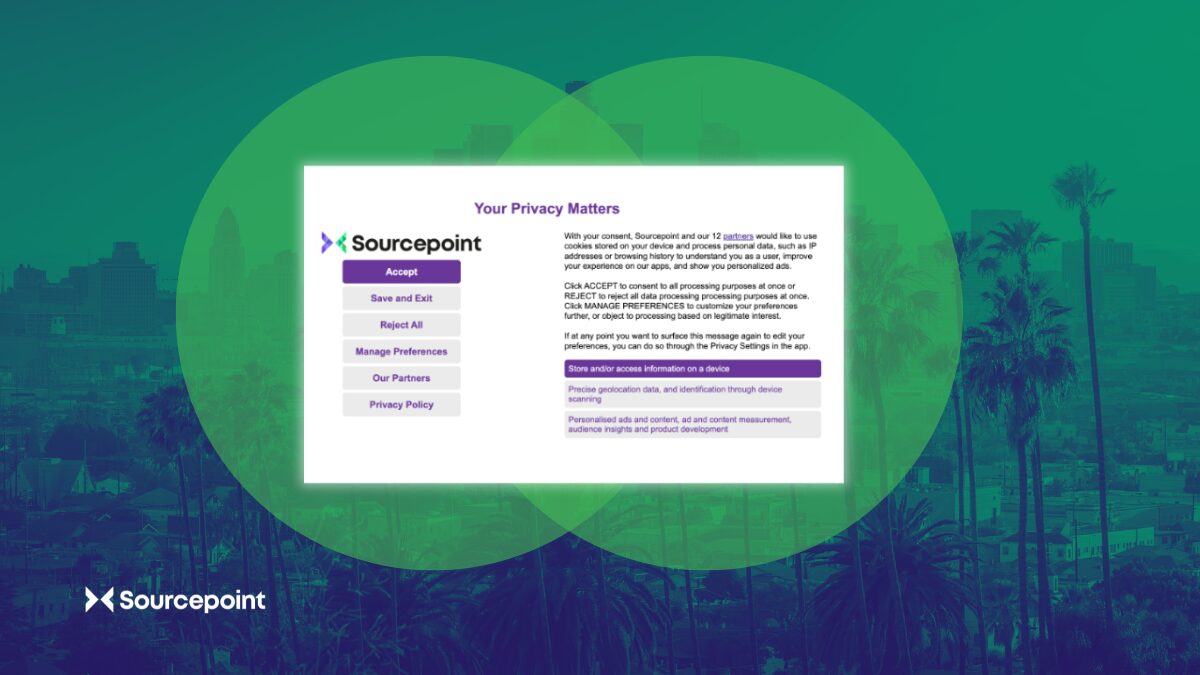Blog
Five key considerations when choosing a consent management platform (CMP)
August 23, 2024

As privacy regulations proliferate globally, companies face mounting challenges in compliance and user experience. A robust Consent Management Platform (CMP) has become a linchpin for staying on the right side of both regulators and consumers. Here are five essential factors to consider when selecting a CMP:
1. Regulatory compliance across markets
Ensure your CMP can adapt to diverse privacy laws, including GDPR and ePrivacy in the EU, CCPA and all the emerging state privacy laws in the US, and LGPD in Brazil. Look for solutions that offer flexibility as new regulations emerge worldwide. If a CMP isn’t proficient at handling the most complex regulations, they’re more likely to stumble as nuances in their application emerge, or new laws pop up. Multi-regulation compatibility is table stakes.
2. Framework compatibility and customization
Since 2018, a range of different industry frameworks have emerged to help companies comply with privacy regulations, starting with GDPR and CCPA. While these frameworks are ostensibly designed to improve interoperability, create consistent consumer experiences, and make compliance easier for everyone, when it comes time to implementing them for the first time, you might not agree! They can be complex to set up, and to keep up-to-date.
At minimum, we recommend selecting a CMP that supports the IAB’s Transparency and Consent Framework (TCF), even if you don’t need to use the framework. Some industry players (including a little company called Google) now require that their partners utilize a CMP that supports this framework. It’s also a good indicator that they’re investing in consent — supporting the TCF isn’t something a freemium cookie banner provider can afford to take on. An CMP that supports TCF is going to stick around for awhile. By the same token, make sure your selected CMP has a track record of working across emerging technologies and platforms like AMP and CTV. You need to be able to ensure an omnichannel experience for your customers.
Finally, make sure your CMP allows customization to align with your brand identity. Your consent message is often the very first touchpoint that a consumer has with your brand. It might also be your only opportunity to get permission to utilize their data to build a stronger relationship with them. Make that opportunity count! Your privacy experience should always feel like an extension of your brand, not a check-box exercise that you’re forcing on your user.
3. Agility in response to tech giants’ privacy changes
We all know it’s not just the regulators who are calling the shots on privacy. When Google announces changes to Chrome, or Apple releases the next App Tracking Transparency (ATT) initiative, you need a CMP who is going to be responsive and ready navigate those changes. Choose a provider that swiftly adapts to privacy updates inside and outside of the regulatory sphere. That agility is important to be able to maintain both your compliance status and your revenue streams.
4. Comprehensive consent reporting
Opt for a CMP with robust analytics capabilities. Your consent messages (as noted above!) are often the first touchpoint for your customers. Look for a CMP that tracks bounce rates alongside consent rates, provides detailed performance metrics, and enables A/B testing for message optimization. These insights allow for continuous improvement of user experience and consent rates.
5. Vendor monitoring capabilities
Finally, make sure you’re evaluating potential CMPs for their ability to scan your website and apps to detect what third-party technologies are present. Consent has to be specific and if you don’t know what’s happening on your website, you can’t accurately collect and manage consent. Not to mention, in addition to presenting a privacy compliance risk, unknown vendors can also be slowing down the performance of your page. There are a range of scanning capabilities offered by CMPs today, from basic one-time scans to more comprehensive ongoing monitoring. Investigate whether there are any built-in vendor assessment workflow tools, whether they can detect cookies but also pixels and other trackers, and monitor cookie durations and referrals. Our guide to evaluating your trackers has some good tips on how to get started.
By prioritizing these factors, you can select a CMP that not only ensures regulatory compliance but also builds user trust and optimizes revenue potential in an increasingly privacy-focused digital landscape. Download our CMP RFP template to help you on your journey.
Latest Blog Posts
Mixed VPPA Rulings Signal Jurisdictional Uncertainty While ICO Releases Consumer Consent-or-Pay Guidance
October 28, 2025Federal courts split on VPPA video provider definitions while...
Florida AG Targets Roku Over Consent Failures as EDPB Announces 2026 Transparency Enforcement Focus
October 21, 2025Florida AG sues Roku over consent failures under state...
California Mandates Global Privacy Control in All Browsers by 2027 as Switzerland Issues Cookie Paywall Guidelines
October 13, 2025California requires all browsers to support opt-out signals by...
Latest White Papers
Connecting Legal & Marketing Teams on Consent and Preferences
February 4, 2025Break down data silos and unlock better collaboration. Marketing...
Navigating Sensitive Data in the U.S.
February 4, 2025Download our comprehensive guide to learn how different states...
Enterprise Guide To Cookie management & Tracker List Curation
July 1, 2024How to review the tracking tech on your websites...
Keep in touch
Sign up for our newsletter to keep up with privacy news for adtech and martech,
plus occasional company news.
